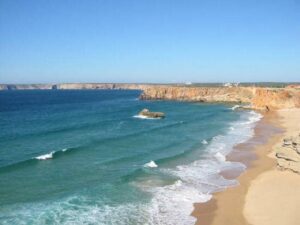Visiting Sintra, a delightful town immersed in the uncontaminated nature of Portugal , represents a unique experience thanks to its things to see and do which have inspired European poets and artists since the 19th century . Famous throughout the world for its beauty, this place near Lisbon will make us feel like we are in a fairy tale, thanks to its castles and historic buildings . Furthermore, this city has been a UNESCO World Heritage Site since 1995 and represents one of the most sought-after destinations in the whole country. Don’t miss the palaces and breathtaking landscapes of Sintra, thanks to an incredible trip to Portugal that will remain in your heart forever.
Sintra, Why visit it
The city of Sintra represents a unique destination to visit during your trip to Portugal , above all thanks to its fairy-tale atmosphere and palaces immersed in lush nature . Furthermore, Sintra has been a UNESCO World Heritage Site since 1995 . This location offers travelers who come to its magical atmosphere just 25 km from Lisbon numerous attractions to see and activities to do in its surroundings too . Furthermore, thanks to its proximity to the capital and its small size, it is also perfect for a day or weekend excursion. Among the main things to visit in Sintra, don’t miss the Palacio National of Sintra , one of the oldest in the country, the Palacio da Pena , straight out of a fairy tale, and the Castelo Dos Mouros , resting on a rocky spur.
Furthermore, just a few kilometers away, you cannot miss an excursion to Cabo de Roca , the border of the ancient world and the westernmost point of Europe. Sintra will amaze you thanks to its architectural and naturalistic beauties , as well as being in a strategic position for an incredible itinerary of Portugal, thus discovering the various facets of this wonderful country. Furthermore, the city is nestled in the Serra de Sintra , a beautiful forest that alone is worth the visit.
Click the button and find all search platforms and book your next trip yourself.
Read also: Visiting the National Palace of Sintra: 10 top attractions
Sintra, History in Brief
The history of Sintra has its roots in the early Paleolithic . The most important Bronze Age find, however, is the Sintra Collar , a gold ring now in the British Museum . In the 4th century BC the Romanization of the Iberian Peninsula took place, making this area a commercial hub , undergoing the influences of various populations. In fact, the toponym Sintra derives from the medieval term for the union of sun and star , due to the city’s location on the Mountains of the Moon . During the 19th century the city was an important cultural center throughout Europe. During the period of Ferdinand II , the monastery became an important castle with Moorish, Renaissance, Gothic and Egyptian influences.
The buildings in its vicinity soon adapted to this style, thus creating a truly unique architectural and landscape panorama , attracting local royalty. In the 15th century Sintra was the hub of numerous itineraries , bringing numerous religious and royal institutions here, such as hospitals commissioned by Catherine of Asturia . During the summer it was a real holiday resort, thanks to its scenery and fresh air. In 1910 , with the Republic , it became a bohemian destination also thanks to the institutions that began to protect and restore the country’s cultural sites. Today this Portuguese city attracts travelers from all over the world every day, as in the past writers and artists went here to savor its atmosphere and be inspired for their creations.
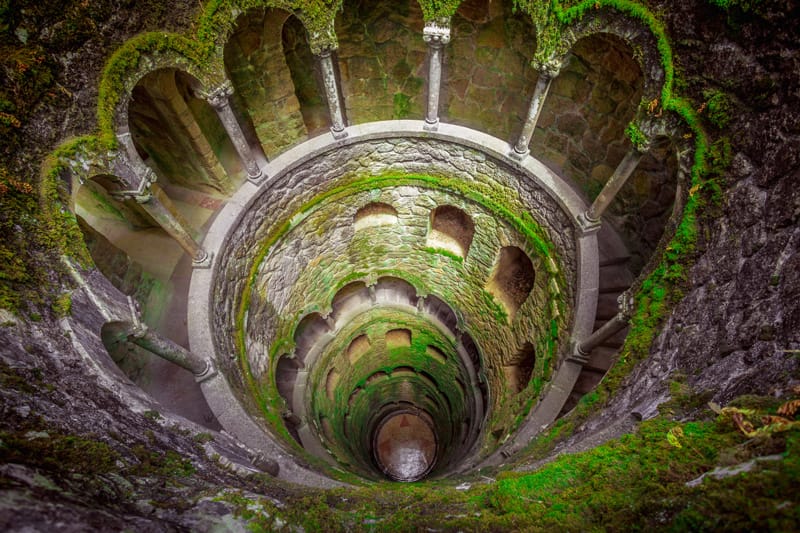
10 Things to See in Sintra
After having seen its history in brief, let’s discover Sintra together and the 10 things to see in this Portuguese city.
1. National Palace
The Palacio Nacional of Sintra is among the attractions to see during your trip here. Built in the 16th century , it represents one of the greatest examples of a medieval palace in Portugal, as well as being the symbol of this city. This city represented an important place for the Portuguese monarchy, as the elections of the rulers from the first dynasties took place. In fact, elements were added to the architecture of this palace at the behest of João I and Manuel I, which enriched its rooms. Visiting the Palacio Nacional during our trip will not only allow us to discover the history of this iconic place, but also that of the country through the elements that we can admire inside and in its architecture.
From the style of the exterior to the elaborate and elegant furnishings inside which combine with the various styles, every part is the result of the rulers who inhabited it. The most important parts that make up the palace are the Sala dos Brasões , dos Cisnes , das Pegas and the Royal Chapel. Among the main styles that we can admire here we find the Moorish and Hispanic ones . There is also the azulejo with the blue and white elements brought by Manuel I and very widespread in the 18th century. Among the most important parts of the Palacio, the kitchen chimneys of over 33 m stand out . Today, this is among the greatest examples, moreover, of organic architecture . Combining separate bodies with galleries, corridors and staircases and creating a single complex.
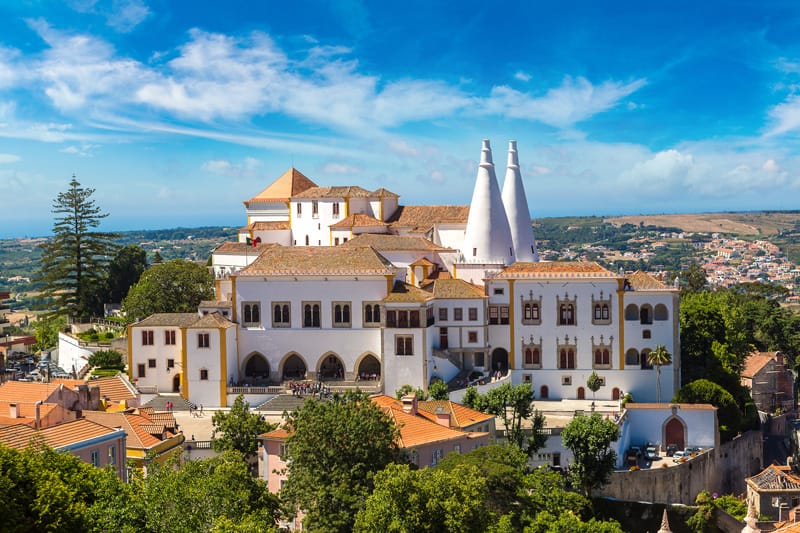
2. Quinta da Regaleira
Commissioned in the 20th century by the millionaire and freemason António Augusto Carvalho Monteiro and created by the scenographer and architect Luigi Manini , the palace and gardens of the Quinta da Regaleira are absolutely among the things to see in Sintra. This palace is surrounded by rich and well-kept vegetation and is built in Romanesque revivalist style , inspired by Renaissance and Gothic architecture. Furthermore, there are also numerous esoteric elements within it . The most iconic part of the complex is the Capela da Santíssima Trindade , a deep initiatory well into which you descend via a steep spiral staircase until you reach the crypt.
Once we reach its bottom, crossing the cave, a lake will open before our eyes . Inside the gardens of the estate there are also small temples, labyrinths, caves and lakes. The Manueline and Gothic style here combines with alchemical , Freemasonry and mythological references , making it a very curious and sought-after place for fans of the genre. Since 1997, the Palace and gardens of Quinta da Regaleira have been owned by the city and open to the public. It also hosts an association that deals with conserving and protecting the city’s cultural heritage. For a tasty break, stop in his restaurant !
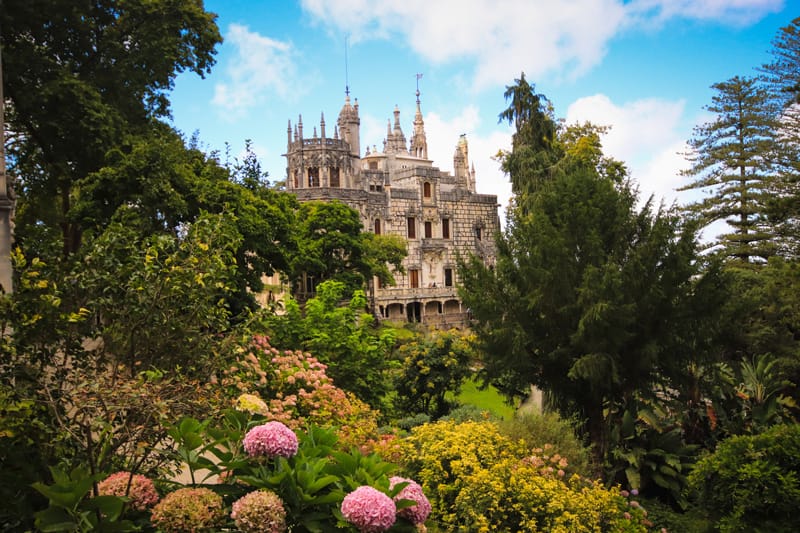
3. Pena Palace
Completed only in 1854 , the Palacio de Pena has a place of honor among the things to see in Sintra. Like the other buildings that we can admire in this city, this one also skilfully combines the Baroque , Moorish , Renaissance and Gothic styles . Its unique structure also stands out thanks to its position perched above the city’s hills and, on good days, it can even be seen from Lisbon . This national monument is surrounded by a beautiful forest, the Pena Park , of over 200 hectares. Here we can observe pavilions, stroll along its avenues among exotic trees and delightful lakes. This historic site was once a medieval chapel.
Under Manuel I, however, a monastery of the Order of Saint Jerome was built which, in the 18th century , was almost destroyed following the great earthquake that struck Lisbon. Ferdinand II , observing how part of the building on the hill had resisted the cataclysm, decided to have the current palace built here, using it as a summer residence . Since 1889 it has been state property, becoming a national monument and museum . Among the ancient elements of this place, we can still observe the convent cloister, the Renaissance chapel and the sacristy. The clock tower was only finished in 1843 and the best part of your visit here is definitely the Queen’s Terrace . Here there is a sundial and a cannon, which always fired at midday.
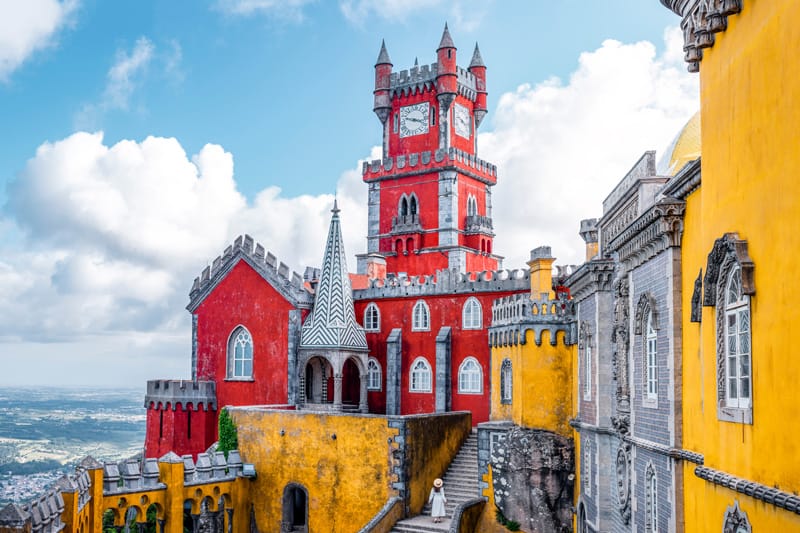
4. Castelo Dos Mouros
After the one in Lisbon, the Moorish Castle of Sintra is the most famous in the region and in the country and cannot be missing from the things to see here during your visit. Located 500 m above the sea, the construction of this place dates back to the period of Moorish rule in the Iberian Peninsula and was built around the year 800. This castle, given its position, was a strategic place to be able to control a very large area , from the Atlantic coasts to the surrounding valley, thus preventing and countering enemy attacks. During the Reconquista period of the Catholic kings , King Alfonso retook Lisbon in 1147, later heading to Sintra.
The castle was then abandoned for many centuries, being invaded by vegetation which damaged it in many parts, as well as due to the earthquake of 1755. In 1840 , under Ferdinand II, the structure was re-evaluated and restored. In 1996 the Palace was declared protected and a site of historical interest and, today, it is possible to visit it and discover, thanks to a guided tour, its rich history. Among its most important parts we find the Ingreja de São Pedro chapel , one of the oldest in the area dating back to the 14th century in late Portuguese Baroque style. Furthermore, the viewpoint and its royal tower are also worth a visit. From this place, Ferdinand II painted the panorama and it is one of the best points to admire the region.
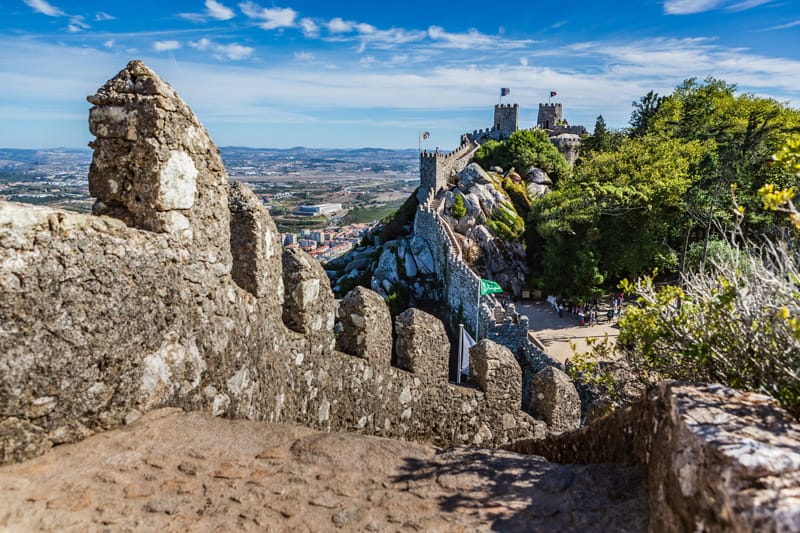
5. Biester Palace
Reopened to the public only in 2022 after a long restoration, the Palácio Biester is among the most fascinating to visit in Sintra. Built in the 19th century , which came to us thanks to the work to recover its architecture, we can discover this wonderful place. Made in revivalist style , it combines neo-Gothic and romantic styles and is located near the Quinta da Regaleira , on the Estrada da Pena. Furthermore, this structure is universally considered the queen work of the architect José Luís Monteiro. Among the predominant elements present in this structure, the main ones are its decorations, the result of a team of artists who worked here, underlining the romantic style of the place.
The tiles from the Fábrica de Cerâmica das Caldas, the French-style stained glass windows and its decorative paintings stand out. Furthermore, in the palace we can immerse ourselves in its wonderful Parque Biester . From here you can admire a wonderful view of Sintra and its surroundings, as well as observe exotic Japanese and Chinese trees . Thanks to a guided tour of this place, we will discover the history of its construction and the mysteries that populate the place. Here, in fact, religion and art meet, among tales of Knights Templar, esotericism and much more.
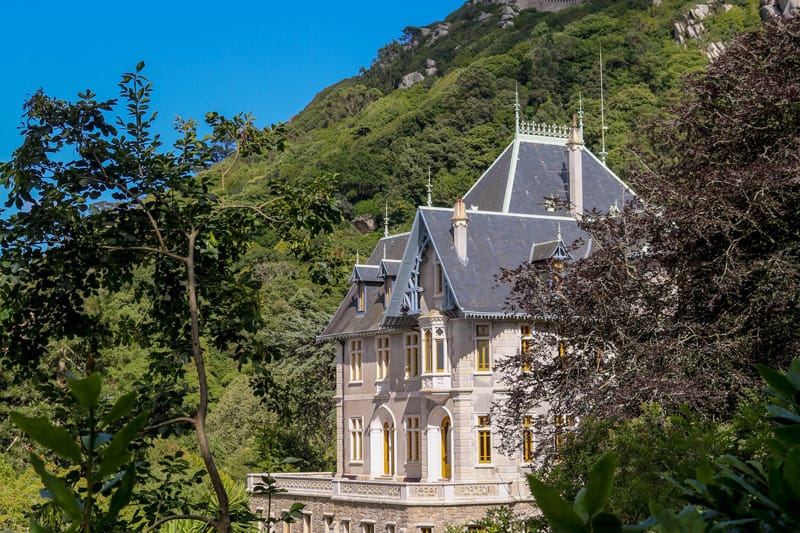
6. Monserrate Palace
Defined by many as the most romantic place to see in Sintra, the palace of Monserrate is surrounded by a wonderful botanical park , which alone is worth a visit. Here, we will find flora from all over the world beautifully surrounding the romantic architecture of the palace; thus creating a unique and majestic place. Walking through its gardens , we would have the impression of being in the East and then moving on to Australia and Mexico. Furthermore, the building itself is richly decorated with vegetal and floral elements.
There is no shortage of statues , bridges that cross small rivers, fountains and greenhouses . The palace was completed in 1856 and its construction was commissioned by Sir Francis Cook . Instead, construction of the gardens only began in the 18th century. The estate is located about 3 km from the historic center of the city and extends for over 30 hectares . The main rooms that make up the interior of this romantic palace are its library , the music room , de Jantar and the room de Estar . Furthermore, this place inspired numerous national and European writers, such as Byron who included it in his work The Pilgrimage of Young Harold .
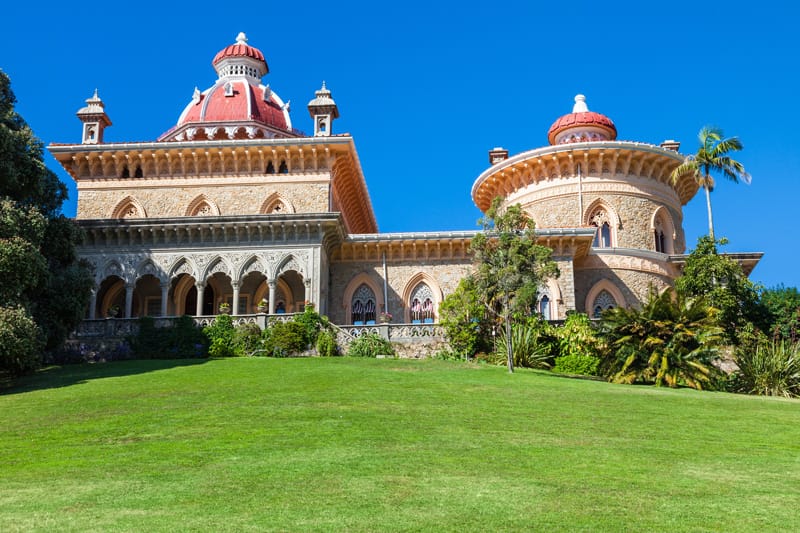
7. Capuchos Convent
Immersed in the Sintra mountains , in contrast to the opulent fairy-tale palaces of this city, we visit a convent of Capuchin friars in ruins, but still full of charm. Built in the 17th century , the Convento dos Capuchos originally had a solitary and austere appearance, a place dedicated to prayer and the silence of the forest and undergrowth. Due to the humidity and microclimate present here, the ruins of the convent are surrounded by ferns and lush vegetation. Visiting this ancient place of prayer allows us to experience a moment in a place far from the routes of mass tourism, walking in silence and in the open air.
The structure was built with local granite and some of its parts are decorated in cork ; a natural thermal insulator. Also known as the Cortiça convent , it was commissioned by de Castro to fulfill the vows of his father, viceroy of the Indies. The simplicity of the structure and its humility, as can be seen from the small doors , is typical of the Franciscan style. The cells inside have only a very small window overlooking the forest. Furthermore, the refectory, the chapel and other buildings were built inside the rock, in such a way as to guarantee silence for prayer. The convent is located 9 km from the historic center and can be reached via a long walk into the Sierra.
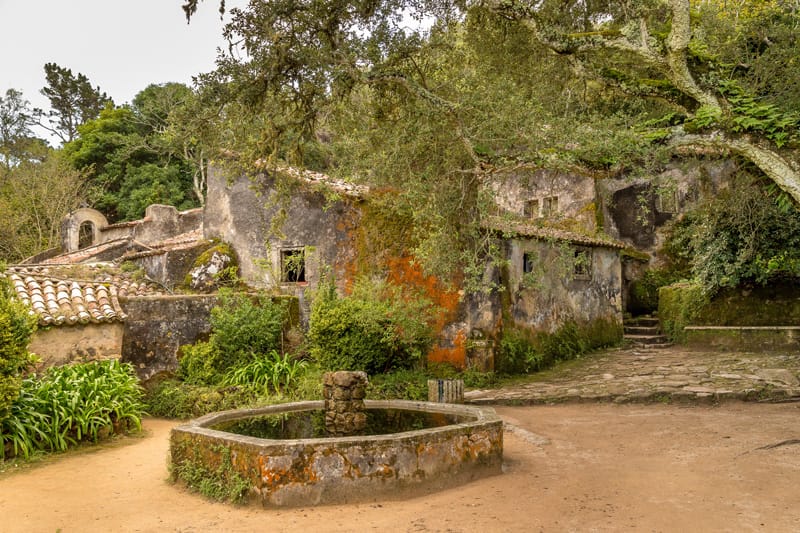
8. Queluz National Palace
Finding ourselves in this place, the first impression will be that of being catapulted into the gardens of the French palace of Versailles , but we are near Sintra, in front of the National Palace of Queluz, one of the ten locations to see here. Built in the eighteenth century , decorated marbles, decorative lakes, statues with mythological figures reign here. In this place lived Maria I , known as La Matta due to her illnesses, and the writer William Beckford stayed . In addition to its beautiful Italian gardens , which make the palace popular and a must-see, its interiors are also noteworthy. Inside the throne room we will find walls covered with mirrors, the ambassador’s room with an entirely marble floor and the Music room which has a beautiful frescoed ceiling.
Furthermore, we can also visit inside this palace the bedroom that belonged to Pedro IV, with paintings of Don Quixote. Don’t miss the private apartments of Maria I’s sister, Benedita , also with fantastic decorations. But the pearl of the Queluz National Palace is undoubtedly its park of over 16 hectares, among the most important in the country. The main sculptural group is the Fountain of Neptune , the work of a pupil of Bernini . Walking here you will relive the same atmosphere of the Portuguese nobles, who also loved to keep monkeys, tigers and lions in large cages in this park.
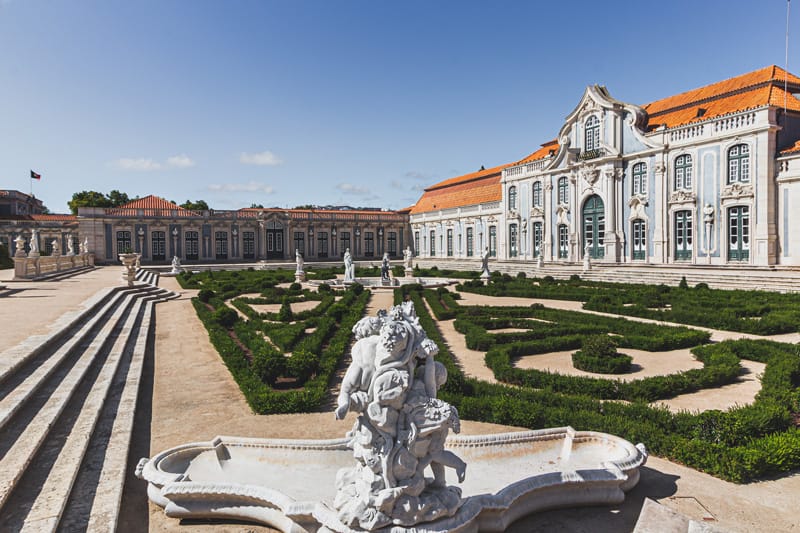
9. Praia da Ursa
Among the things to do in Sintra, don’t miss an excursion to the beautiful Praia de Ursa, inside the Sintra-Cascais Natural Park . A summer destination loved in the past by Portuguese nobles and still very popular today. Overlooking the wide cliffs of the Atlantic coast , hidden from prying and not very curious eyes near Cabo de Roca . It is not very easy to get to this place, as we have to cross a steep path that runs along the side of the cliff. Once you reach the beach, however, the view will make the effort worth it! This wild beach does not have any services and it is therefore necessary to bring an umbrella and drinks if we wish to spend the day here.
Another way to reach the beach is by boat , thus avoiding the steep path. Here the beach is very soft and there are only a few rocks. Furthermore, the beach takes its name from one of these rocks, which resembles the shape of a bear . To reach the beach there are numerous signs along the routes. On the right of the beach there is also a delightful waterfall ; it is certainly a perfect place to relax, completely immersing yourself in nature.
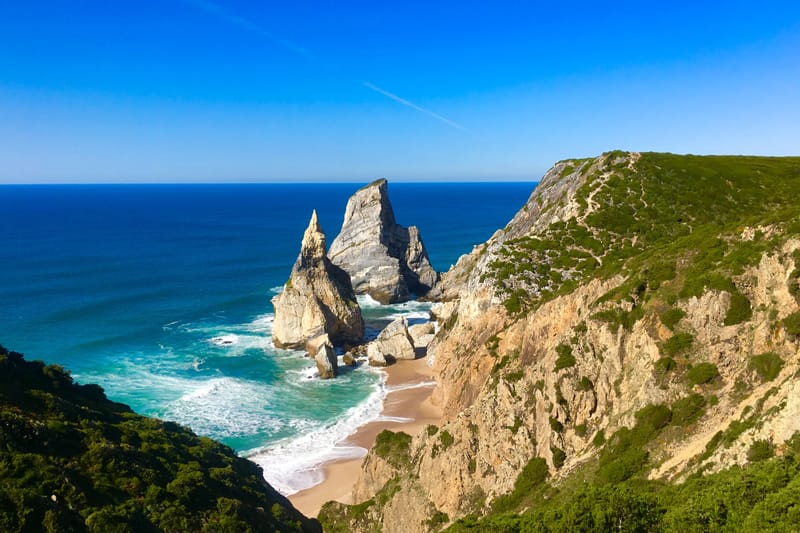
10. Cabo da Roca
Just 18 km from Sintra, don’t miss Cabo de Roca, the westernmost point in Europe and considered the end of the world for the ancients. An evocative place, which seems almost frozen in time, overlooking the cliffs of the Atlantic at a height of over 100 m . Stop and watch the waves crash on the rocks from this promontory, immersing yourself in its wild and almost frightening nature. Here, there are no large buildings and it is still off the beaten track of mass tourism, creating an ancestral atmosphere that makes anyone who visits this place feel tiny. For those who don’t suffer from vertigo, there are numerous routes that wind along the coast, offering a unique view.
Winter , although colder, is certainly the best season to visit Cabo de Roca immersed in a melancholy landscape , making it even more magical. In any season you decide to visit the place, however, it will always be very windy ; so bring the necessary clothing with you. The only buildings present here are the ruins of a 17th century fort , a small café, a shop for your souvenirs and its iconic lighthouse , with a light that reaches over 45 km away. On the monument that marks the westernmost point of Europe you can read the quote from Luis Camones , poet of the 16th century: Where the land ends and the sea begins .
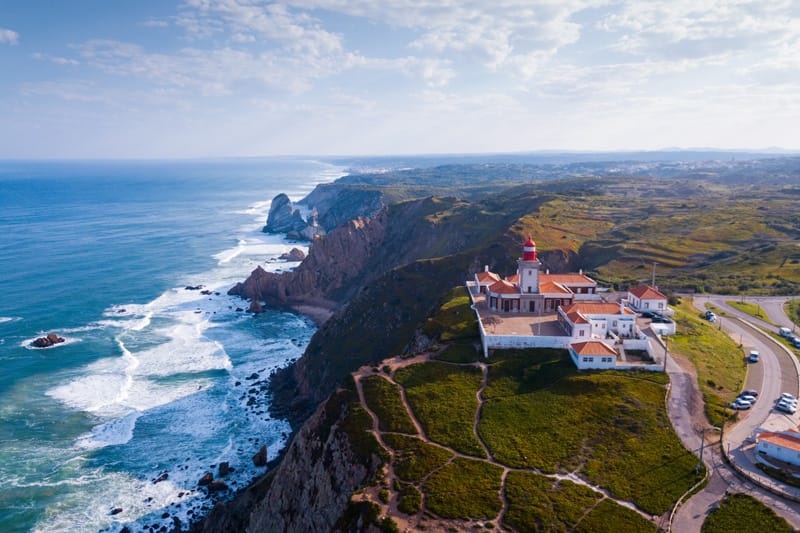
FAQ, Sintra what to see
What to see in Sintra in one day?
One day is enough to visit its main must-see attractions, such as Palacio National, Quinta da Regaleira, Palacio da Pena and the Castelo Dos Mouros.
Half day in Sintra, what to see?
With half a day don’t miss its fairy-tale Palacio da Pena, the Palacio National and the Palace of Monserrate.
What to see in Sintra and surroundings?
In addition to the things to see that we have presented in this visit guide, in the surroundings of the city do not miss the Praia da Ursa beach and Cabo de Roca.
Read also: Mayan Rovine from Copan and Agua Caliente in Honduras




